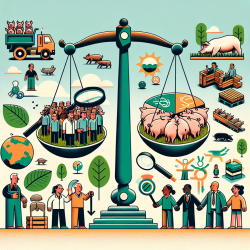Introduction
In the realm of public health, understanding the relationship between menstrual hygiene and reproductive health is crucial. A recent study titled "Assessing the link between hygienic material use during menstruation and self-reported reproductive tract infections among women in India: a propensity score matching approach" provides valuable insights into this topic. This research highlights the importance of using hygienic materials during menstruation to reduce the prevalence of reproductive tract infections (RTIs) among women in India.
Understanding the Study
The study analyzed data from the National Family Health Survey (NFHS-5) conducted between 2019 and 2021, involving 27,983 women aged 15-24 years. It aimed to establish a causal link between the use of hygienic menstrual materials and the prevalence of RTIs using a quasi-experimental method known as propensity score matching (PSM).
Key Findings
- Approximately 4% of women reported RTIs, with significant state-level disparities. West Bengal had the highest prevalence at 9.3%, while Puducherry had the lowest at 0.9%.
- Women using hygienic materials during menstruation reported fewer RTIs (3.2%) compared to those using unhygienic materials (4.9%).
- The study found a significant reduction in RTI prevalence among women who used hygienic materials, highlighting the importance of promoting these materials as a preventive measure.
Implications for Practitioners
For practitioners working in the field of women's health, this study underscores the importance of advocating for the use of hygienic menstrual materials. Here are some practical steps practitioners can take:
- Education and Awareness: Educate women and girls about the benefits of using hygienic materials and the risks associated with unhygienic practices.
- Access and Availability: Work with local governments and NGOs to improve access to affordable hygienic materials, especially in rural areas.
- Community Engagement: Engage community health workers to discuss menstrual hygiene with women and girls, breaking the stigma and misconceptions surrounding menstruation.
Encouraging Further Research
While this study provides valuable insights, there is a need for further research to explore the specific types of RTIs prevalent among women in India and the effectiveness of different hygienic materials in reducing these infections. Additionally, future studies should consider including menstruating trans and non-binary individuals to provide a more comprehensive understanding of menstrual health issues.
Conclusion
The study highlights the critical role of hygienic menstrual materials in reducing the prevalence of RTIs among women in India. By promoting the use of these materials and addressing the barriers to their access, we can significantly improve women's reproductive health outcomes. Practitioners are encouraged to implement these findings in their practice and advocate for policies that support menstrual hygiene management.
To read the original research paper, please follow this link: Assessing the link between hygienic material use during menstruation and self-reported reproductive tract infections among women in India: a propensity score matching approach.










